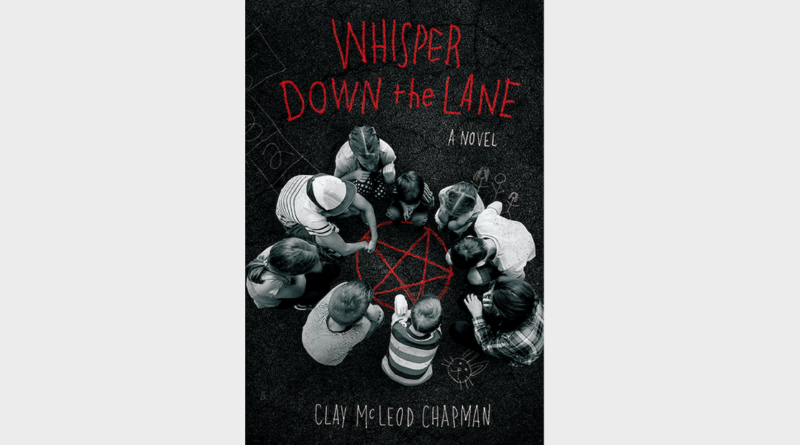REVIEW: ‘Whisper Down the Lane’ by Clay McLeod Chapman
Image courtesy of Quirk Books / Provided by official site.
Clay McLeod Chapman’s new book, Whisper Down the Lane, takes a look at the so-called Satanic Panic of the 1980s with a carefully crafted tale that is inspired by the headlines from that tumultuous decade. The narrative is split between two stories: one involving a young boy named Sean in the 1980s and another one involving a grown man named Richard in more recent times. These two threads stay separate for the balance of the novel, but soon enough dark themes begin to overlap and readers start to see connections.
Sean is living a somewhat lonely life with his single mother. There are few places or people he can find solace in, and his mother is down on her luck when keeping everything running in life and in the household. Then, questions start to arise about Sean and his fellow classmates, and the connection they have with their teacher. The allegations that emerge are serious and scary (in fact, as a reader, the details prove to be shocking and disturbing), but the veracity of the claims is also in doubt.
Thirty years later, there is the character of Richard, a teacher himself who is newly married to Tamara. He is hoping one day to adopt Tamara’s son, Elijah, and begin a new life as a loving parent, but strange things start to occur at the school where he works. And Richard’s life and the lives of everyone in his small town are upended, again with reputations tarnished and fingers pointed.
Chapman is obviously using some well-known cases from the 1980s as source material. He still fictionalizes the names and proceedings, but there is a social commentary embedded in his narrative, one that asks questions about the power of suggestion and the difficulty of protecting children from the perceived darkness of the world. He documents a time period when Satanism was the go-to answer for social problems that would arise in a seemingly perfect neighborhood. He explores motivation, psychology, gossip, innocence, guilt and the uncomfortable reality of simply not knowing the truth.
To show the lengths by which the Satanic Panic got out of control, Chapman even writes in a Geraldo Rivera-like character who films a TV show that dives deep into the allegations at the center of the story and purports to have solid statistics about the worship of the devil in the world. Again, much of the material in Whisper Down the Lane will feel familiar because this piece of historical fiction stresses the real world by taking actual case studies and using them as inspiration. (Chapman even lists some additional reading for those interested in learning more about this social phenomenon.)
The subject material is admittedly difficult to read. The allegations and accusations jump off the page, and sometimes the details are scary to behold. After all, this is a horror tale, and Chapman is interested in showing horror in multiple contexts.
The decision to split the story between two protagonists and two time periods was a marvelous one by Chapman. There’s an added expectation that occurs when readers jump back and forth between the then and now because the stories feel so far apart — at first — and then they start to inch closer and closer. Interspersed with these selections of prose are transcript interviews that further the suspense and detail what can happen when a town plays the game of telephone (another name for that game is “whisper down the lane,” as the title suggests).
Chapman is a skilled writer, and Whisper Down the Lane is a shocking, yet important novel about the Satanic Panic of the 1980s, detailing a case that would be scary if true … and scary if not.
By John Soltes / Publisher / John@HollywoodSoapbox.com
Whisper Down the Lane by Clay McLeod Chapman. Quirk Books. 304 pages. Click here for more information.

